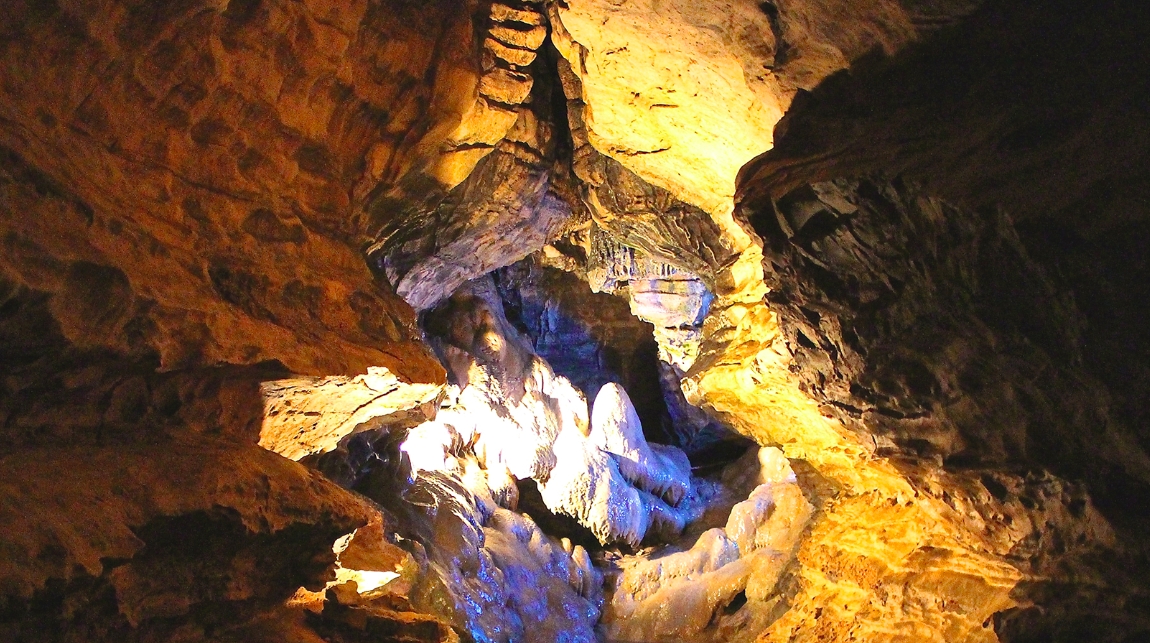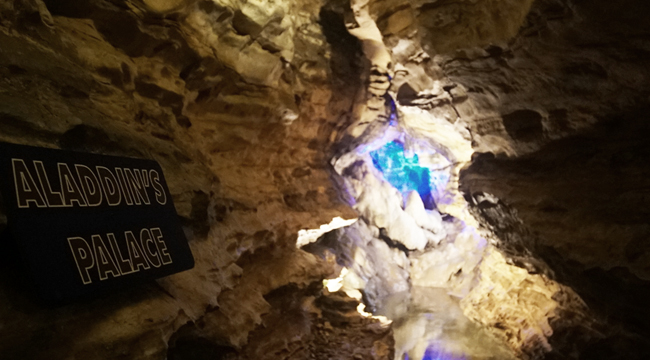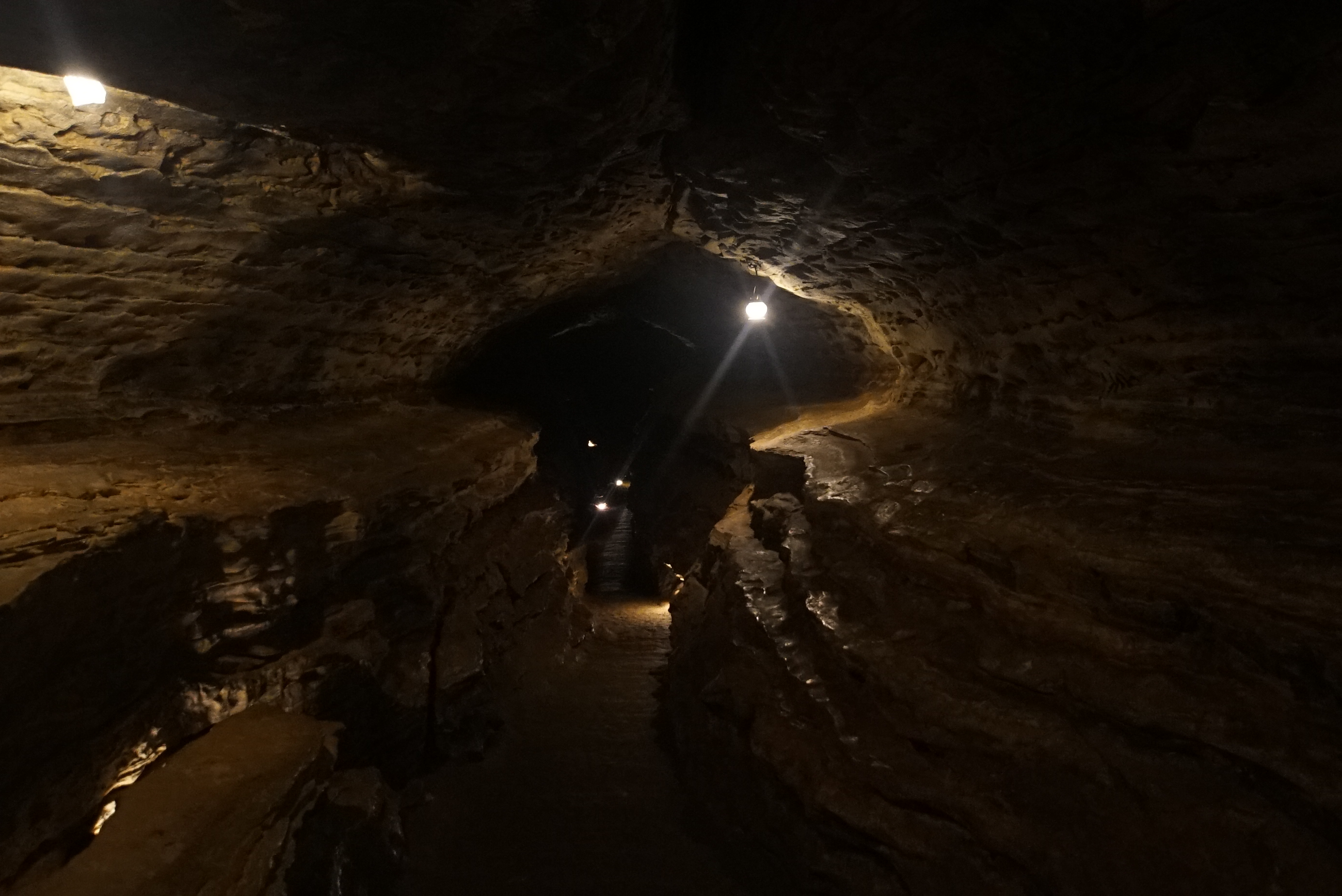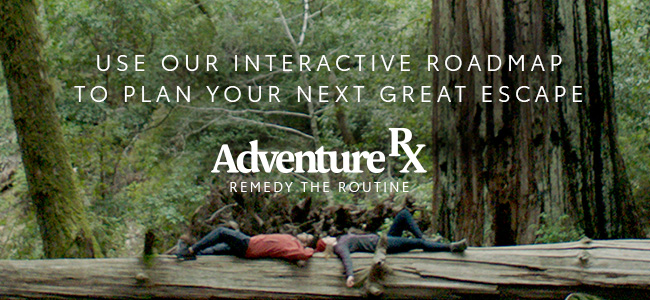
If you’ve ever taken a writing class, you’ve probably heard the old adage: write what you know. For a young Samuel Langhorn Clemens, later known as Mark Twain, that meant Hannibal, Missouri. The town, on the banks of the Mississippi River, served as the inspiration for the fictional town of St. Petersburg — home to Tom Sawyer and Huckleberry Finn. Its dense woods, intricate cave systems, and sandy islands offered a world of adventure for Twain’s heroes to explore.
The limestone caves, now called the Mark Twain Cave and the Cameron Cave, played a crucial role in The Adventures of Tom Sawyer. They’ve been a draw for literary enthusiasts ever since. Less than two hours from St. Louis, Hannibal and its caves offer an easy break for weekend travelers. After all, what better way to escape the hustle of city life than deep underground in the dark, dank silence?
***
After an easy one hour and forty-five-minute drive from downtown St. Louis, my stepdad, Rick, and I (he’s the Huck to my Tom on this trip) pull up to the privately owned National Landmark. The Mark Train caves are unassuming at first, but there’s a certain tough-to-pin-down energy to the area. I think of the generations of local teens who likely snuck inside them for a thrill. Every small town on earth probably has this sort of place, where kids seek perilous adventure. In my Maine hometown, there was a rusted out cement truck in the woods that led to a train trestle enveloped by a bamboo forest. My brother and I spent plenty of long days in those woods.
Standing at the entrance of the Mark Twain Caves, I try to see them how Twain himself must have seen them growing up — dark and full of mystery. My stepdad and I sign up for a tour, and after one of those short reenactment-heavy videos explaining the history of the caves, we’re off.

As you enter the cave, the touch of cold meets your face — the temperature inside stays around fifty-two degrees year-round. It’s well lit, having been electrified since 1939, so you can intricately see the cave’s unusual architecture. I’ve been in my fair share of underground cave systems both above ground and underwater, but these caves are unique in their starkness. The stalactite, stalagmites, and watery flowstones you expect to see in a cave are missing.
Instead, the center was carved out by the inland sea that later became the Mississippi River. It looks almost like the ruins of constructed brick edifices, long forgotten by their destroyers, abandoned and apocalyptic looking.

Inside, the cave system quickly becomes a dizzying maze of passageways and crevasses. It’s easy to understand how legends and stories could form here. You get a sense of a deep, fascinating history that spans far beyond Twain’s work. The graffiti of thousands of visitors line the passageways. Tours used to encourage patrons to sign their names by darkening a patch of limestone with their candles then scraping their name into the soot. The first recorded entry is from 1820.
Rick and I have essentially a private tour, so we get to see more of the signatures than on the larger, 30 person guided walk. The most famous of these is Jesse James. In 1879, he signed his name in pencil on a part of a narrow corridor which I have to suck in my breath to squeeze through. According to our guide, Jessie, this autograph has been verified on four separate occasions by signature experts. Most caves in Missouri claim that Jesse James and his gang hid out there at some point. This one seems legit.
Down this same hall is the location of a macabre chapter in the history of the cave. The cavern was originally called McDowell Cave — for a famed St. Louis doctor who attempted to petrify his daughter inside one of its rooms. Instead, he ended up embalming her, unintentionally making her an object of curiosity and pranks by local kids. Standing nearby, I get a chill that seems unrelated to the cold of the cave.
Seconds later, Jessie switches off all the lights and the cave goes completely dark. In our age of digital phones and near-constant electronic stimulation, it’s not often that we get to experience the intense sensory deprivation that complete darkness produces. I feel disoriented nearly immediately. “This,” I realize, “is a brief glimpse into how terrifying it must have been to explore the caves in their original state.”
Lights restored, we continue on. Down the ¼ mile corridor called Grand Avenue exists an offshoot route that serves as the backdrop of a Norman Rockwell painting. It’s still housed in a gallery in the town. Further down, is an open chamber affectionately called the Living Room – complete with natural rock formed furniture – where they used to hold town meetings in summer, to take advantage of the natural air conditioning.
https://www.instagram.com/p/BXdFLKOjmEq/
Through these anecdotes and the natural beauty of the place, I keep arriving at the same thought: at one time, these astonishing caves were the local playgrounds of so many young people. I think of the number of kids who grew up in Hannibal and how they all must have had similar, intricate memories of the place. Clearly, these tunnels have seen lots of adventure.
Mark Twain used his experiences in the caves of his hometown to tell one of the most iconic tales of American childhood, but there are plenty of untold tales too. Just before we exit, I can almost hear them — wild yarns whispered by ancient ghosts, twining through the air. The thought of it makes me smile, remembering the explorations of my childhood. Then comes the biggest shock of the tour: glancing at my stepdad and realizing he’s doing exactly the same.
Want to go there?
Price: Tickets are $18.95 for non-group rate adults and $9.95 for kids 6-12 ($5 for 5 and under).
Driving there: The drive is an extraordinarily easy straight shot north from St. Louis via I-64 W to US-61 N. Plan on about two hours.
When to go: The tours operate 363 days of the year. Cameron Cave is only open from Memorial Day to Labor Day though, so if you want to visit the more undisturbed of the offerings, you’ll want to go in summer.
Stay: The adjoining 99 site campground is open from April 1st to October 31st.







